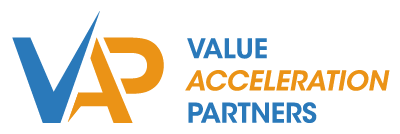In today’s highly competitive employment market, having an effective incentive compensation program is not just a perk but a strategic necessity. Drawing from both my personal experience and industry best practices, this post aims to provide some practical insights into the intricate process of creating incentive programs that truly resonate with employees and drive business success.
It’s Not Just About Money
Incentive compensation is a multifaceted concept, extending beyond mere financial rewards to encompass a range of motivators that align employee efforts with company goals. The key lies in understanding its role not just as a reward mechanism but as a driver of organizational culture and employee engagement. In my own journey, recognizing this broader impact was pivotal in designing programs that not only incentivize but also inspire.
- Actionable Takeaway: Identify non-monetary motivators in your organization that could complement financial incentives.
Fair, Reasonable & Achievable
One of the most pressing challenges in implementing incentive programs is ensuring they are perceived as fair and attainable..with effort. In my experience, setting transparent criteria that reflect both individual and team contributions helps in this regard. Also, flexibility in adapting to changing business needs and employee feedback is vital. For instance, shifting focus areas or modifying performance metrics can keep the program relevant and effective. If a program is not achieving your desired results, change it. You might get some grumbling but that is better than living with a program that is just now working.
- Actionable Takeaway: At mid year, review your incentive criteria for fairness and adjust as needed based on employee feedback.
Effective Incentives
While financial incentives are powerful, combining them with non-monetary recognitions, like additional vacation days or professional development opportunities, can enhance their impact. I’ve found that offering a mix of short-term and long-term incentives encourages both immediate performance boosts and sustained effort. This blend caters to diverse employee motivations and life stages, making the program more inclusive and effective. It is also generally helpful to design programs that provide for either monthly or quarterly payouts. This makes the program more tangible.
- Actionable Takeaway: Assess your current incentive mix. Consider incorporating both immediate and long-term rewards.
Program Design
The key is to create a direct and transparent link between performance and rewards. This connection should be clear, logical, and consistent, making it easy for employees to understand how their efforts translate into incentives. By keeping the program simple and focused, it becomes more accessible and impactful.
Selecting appropriate metrics is critical for the success of any incentive program. I have always found that a combination of quantitative and qualitative metrics creates the best result. Quantitative metrics might include sales targets or production goals, while qualitative metrics could encompass customer satisfaction scores or teamwork. This holistic approach ensures a comprehensive evaluation of performance, valuing both tangible results and the intangible aspects of employee contributions.
- Actionable Takeaway: Simplify your program’s structure to ensure clarity and direct linkage to performance.
Get Them Engaged
Active engagement of employees in developing, refining and, ultimately, embracing the incentive program is essential. This involvement can be achieved through surveys, focus groups, or feedback sessions. Such participatory approaches not only help in tailoring the program to actual employee needs but also foster a sense of ownership and commitment towards the program.
Good communication around the details is also really important. It’s crucial to clearly articulate the program’s objectives, criteria, and rewards. Regular updates and transparent discussions about the program’s performance and potential adjustments help in maintaining its relevance and effectiveness.
Continuous evaluation and timely adjustments are necessary to ensure the incentive program remains aligned with business goals and employee expectations. This process should involve regular performance reviews, feedback sessions, and benchmarking against industry standards. Adapting the program based on these evaluations helps in keeping it fresh and motivating.
Crafting a program that really works throughout the organization definitely takes some real effort and is often an administrative challenge. However, if done right, it can really boost overall performance and commitment.

